Ang Ku Kueh (in Hokkien), or red tortoise cakes or 红龟粿 in Chinese, is a popular and traditional Chinese snack commonly found in Southeast Asia. You will find different colours of it – red, yellow, purple, green, grey, blue, and etc. The snack is shaped like a tortoise, with the top imprinted with auspicious Chinese characters such as 福 (fortune) or 吉祥 (auspicious) or 寿 (longevity). With such well-meaning words, the snacks are traditionally served during happy events such as the major Chinese religious rituals, birthdays of elderly people, or even the first month celebration of a baby. I have previously made red ang ku kueh with peanut paste filling, green ang ku kueh with pandan coconut filling, here’s another version of my sapphire blue ang ku kueh with mung bean paste filling.
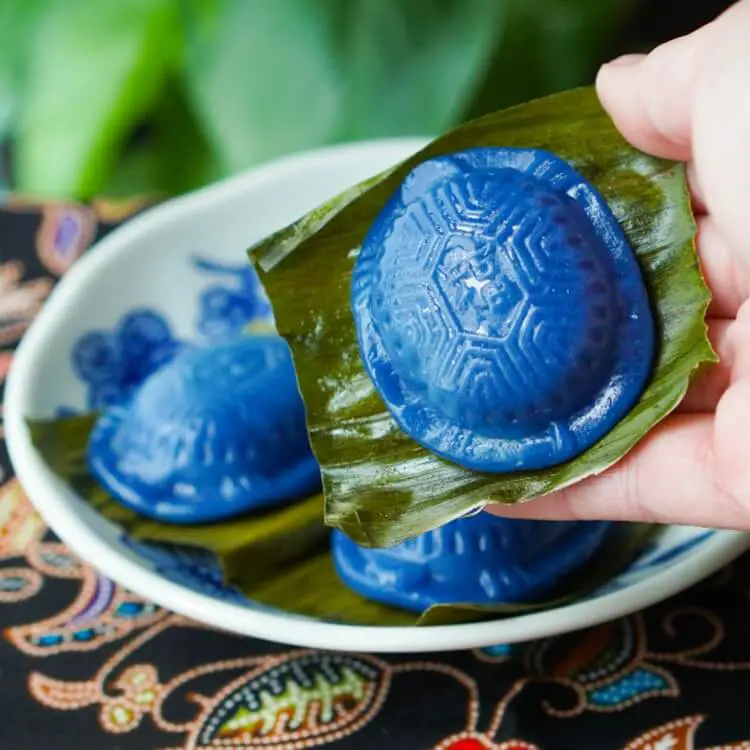
This recipe is sugar-free, I have used the Stevia sweetener in a very small amount to make the dough skin and the filling. And since there is no gluten in the flour used or in any other ingredients, this recipe is perfect for people who seeks gluten-free recipes.
You will find available in the markets different types of fillings and there are constantly new fillings that are being produced. Such as the traditional sweet or savoury mung bean paste, yam paste, chestnut paste, peanut paste, or pandan coconut filling, and many more. There is not set colour for the skin, although red is the default colour, as implied in the name ‘red tortoise cake’.
We first make the skin with glutinous rice flour, hot water and oil, sugar, salt, then fill it up with a sweet or savoury paste filling, before steaming it into a translucent looking cake. The resulting texture is skin that is sticky, soft and chewy. The locals typically enjoy this snack with coffee or tea in the morning or anytime of the day.
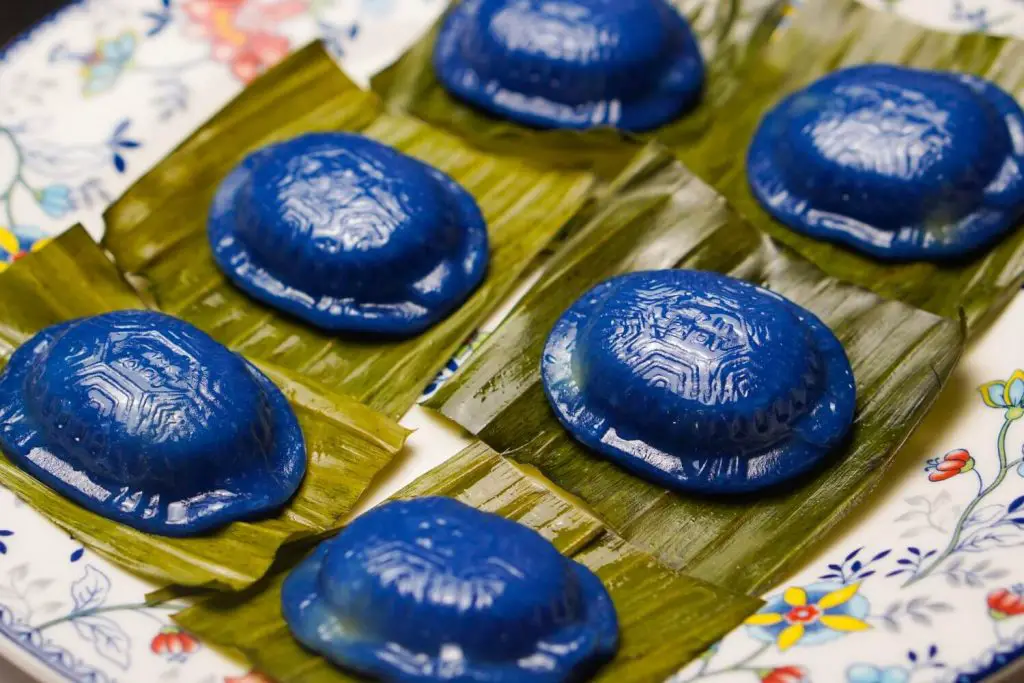
Tips when making Ang Ku Kueh with Mung Bean Paste Filling
- Make sure you add hot boiling water to ‘cook’ the glutinous rice flour in order to yield a soft pliable dough that doesn’t break easily when kneaded. Just hot water is not good enough.
- I used 1g of dried blue pea flowers and the colour turned out quite dark. If you want it to be lighter, you can reduce the amount of dried blue pea flowers by half or a quarter.
- When steaming, make sure to steam it on medium heat, and leave a little opening to let the steam out. Wipe out any dripping moisture on the lid cover every time the water condenses heavily on it. This method helps to maintain the imprints and make sure the kuehs are not flattened.
- I used a ratio of dough versus filling 50/50. It works out perfectly for me.
- Coat a thin layer of glutinous rice flour before you press the dough into the mould, to ensure it’s easy for the pressed dough to be knocked out of the mould.
- Once properly steamed, cooked kueh should have translucent skin, the colour of the skin will intensify.
- Be sure to brush some vegetable oil on the steamed kueh to prevent it from sticking together as the skin is sticky.
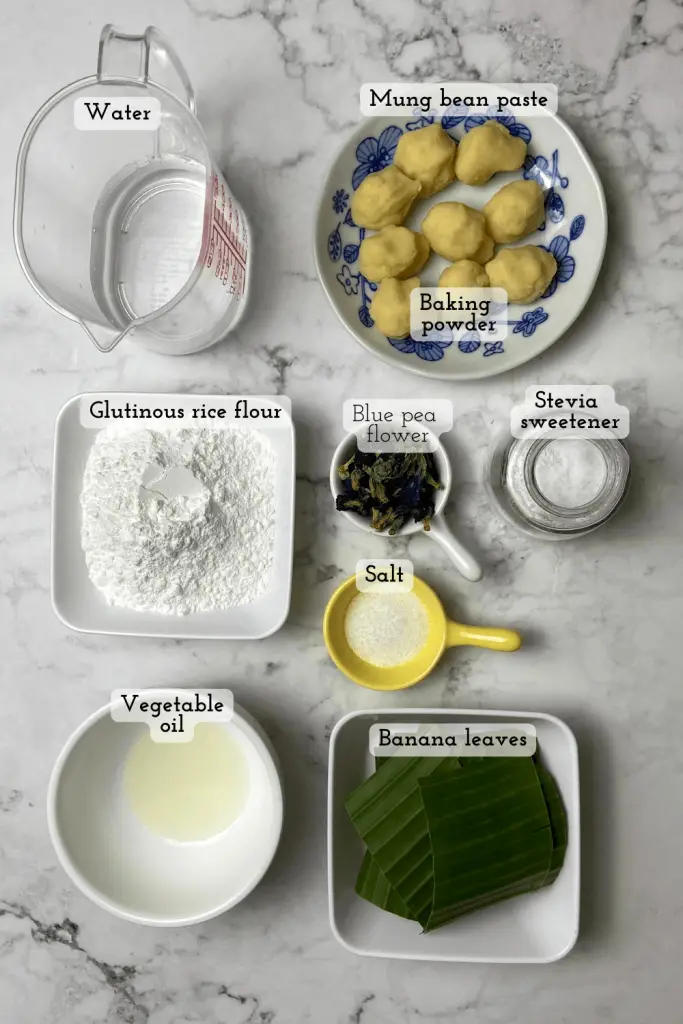
Check out these Asian snack / kueh recipes
f you like local snacks or kuehs, do check out these recipes, many of these are gluten-free, eggs-free and made with Monk fruit or Stevia sweetener, making them a healthier snack version from the original recipe:
- Pumpkin Ang Ku Kueh with Purple Sweet Potato Filling 紫薯馅金瓜红龟粿
- Ang Ku Kueh – Sugar-Free and Gluten-Free (Red Tortoise Cake 无糖红龟粿)
- Pandan Coconut Ang Ku Kueh (Red Tortoise Cake 香兰椰丝红龟粿)
- Pumpkin Ang Ku Kueh with Chestnut Paste Filling 甘栗馅金瓜红龟粿
- Dadar Gulung (Kueh Dadar 香兰椰丝卷)
- Ondeh Ondeh
- Sweet Potato Kueh 甜番薯椰丝糕
- Kueh Ubi Kayu 蒸木薯糕 (Steamed Tapioca / Cassava Cake)
- Kaya Puff Pastry (Kaya Kok / 咖椰角)
- Sesame Ball (Air Fryer Chinese Jian Dui 气炸锅煎堆)
- Soon Kueh 笋粿 (Bamboo Shoots Dumplings)
Watch how to make Ang Ku Kueh with Mung Bean Paste Filling on YouTube
Check out other flavours of Ang Ku Kueh
Here’s my rendition of the classic red ang ku kueh using the concentrated juice of the beetroot, and wrapped with peanut paste. Since I made my own paste, I was able to substitute the sugar with Stevia sweetener or Monk Fruit sweetener, both ideal for people who are conscious about taking refined sugar.
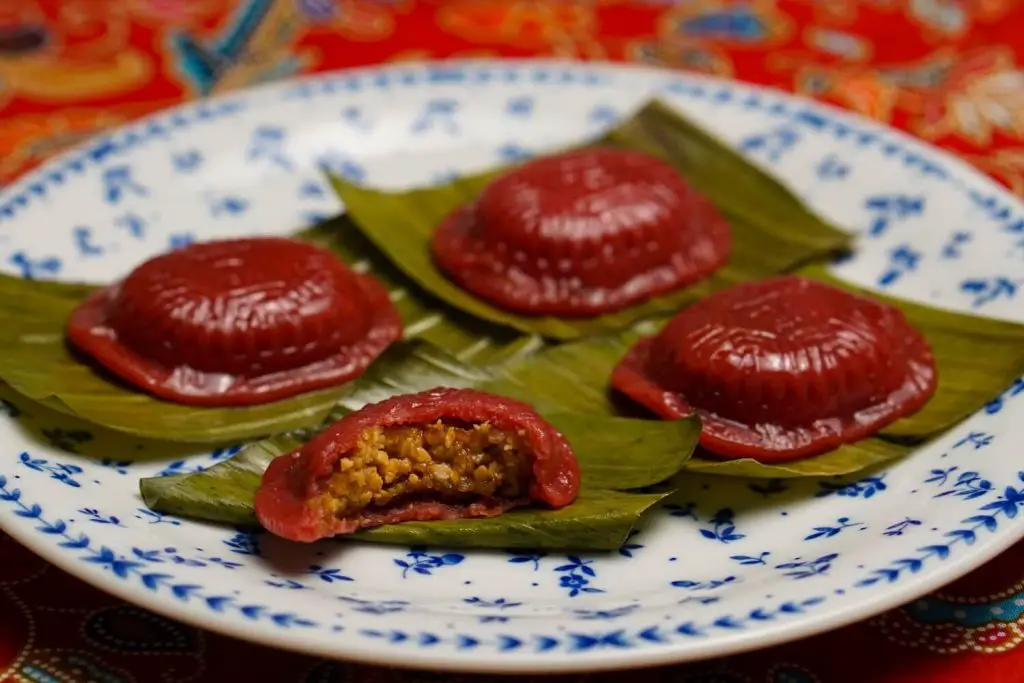
In this pandan coconut ang ku kueh recipe, pandan juice is used as both the flavour and colouring for the dough skin. This ang ku kueh is filled with an easy and quick to make pandan and gula melaka flavoured coconut filling.
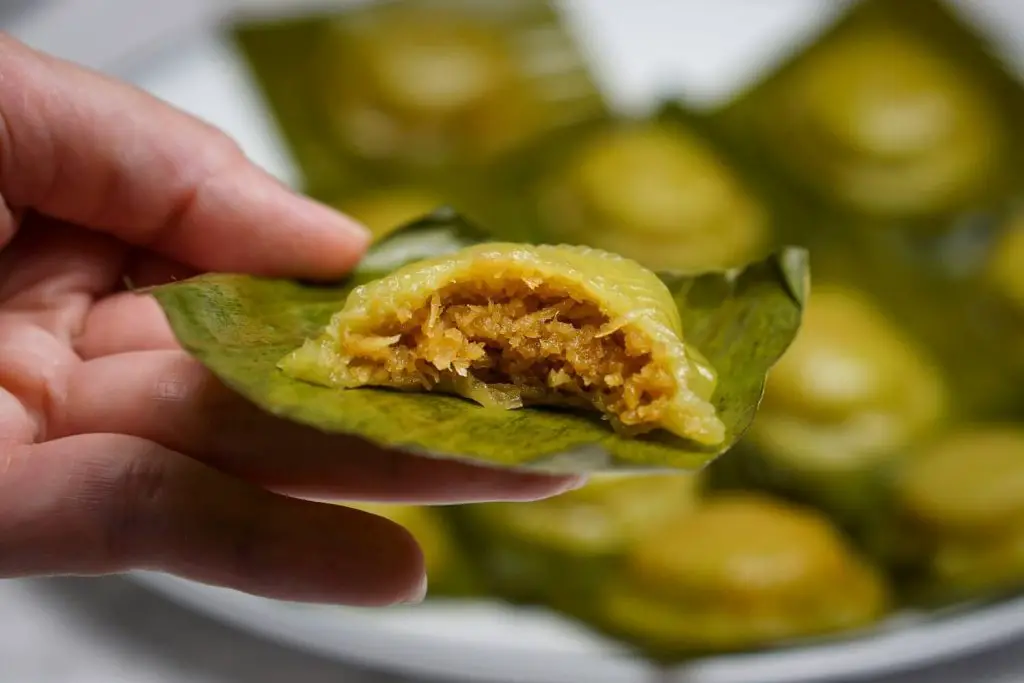
Pin now, make later
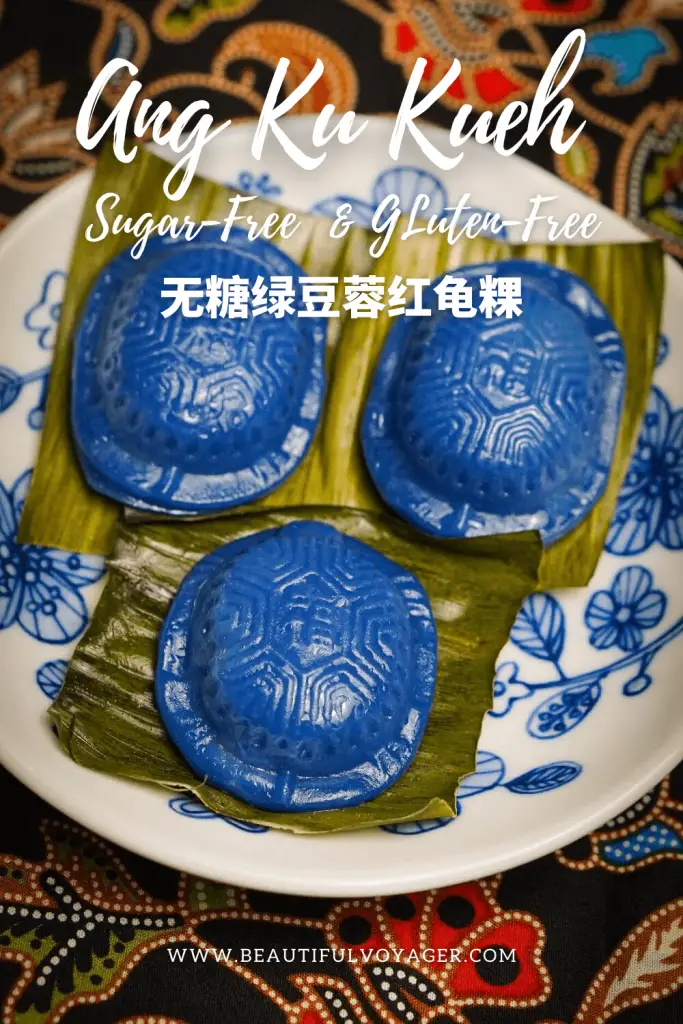
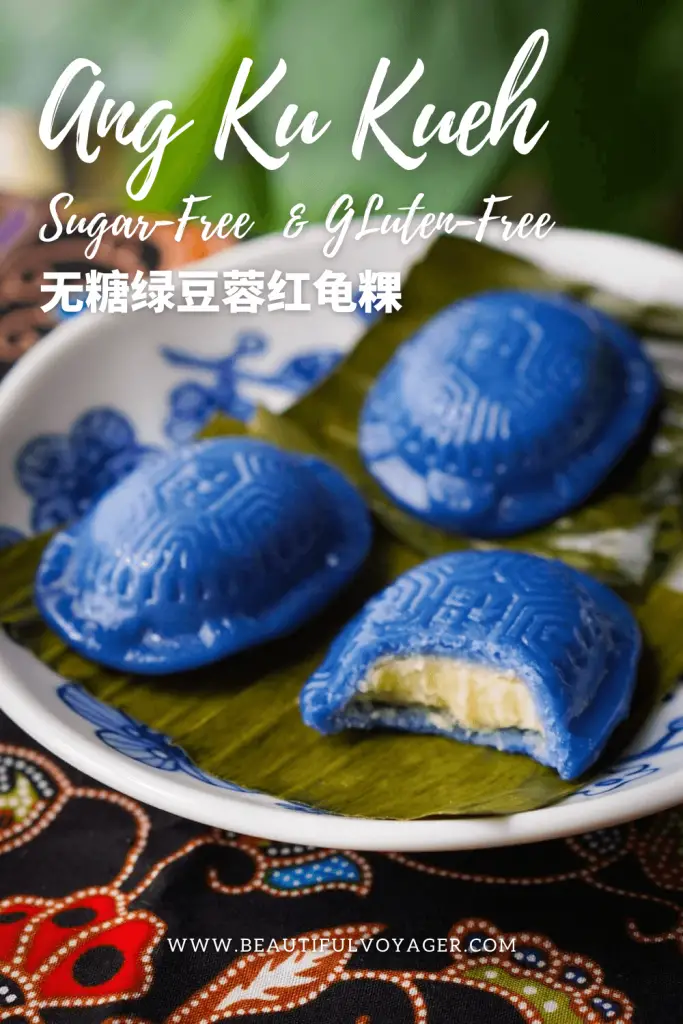
Sugar-Free and Gluten-Free Ang Ku Kueh with Mung Bean Paste Filling (Red Tortoise Cake 无糖无麸质绿豆蓉红龟粿)
Ingredients
- 80 g glutinous rice flour
- 1 tsp Stevia sweetener or sugar
- ⅛ tsp fine salt
- 10 ml vegetable oil
- 75 ml water
- 1 g dried blue pea flower
Others
- Mung bean paste filling
- Banana leaves wiped clean and cut to size
- 1 tbsp vegetable oil for brushing
- 1 tbsp glutinous rice flour for dusting the moulds
Instructions
Make the dough:
- Boil 75ml water with 1g dried blue pea flower.1 g dried blue pea flower, 75 ml water
- Mix 80g glutinous rice flour with 1/8 tsp fine salt, and 1 tsp Stevia sweetener (or sugar). Stir to combine well. Make a well in the centre and pour in half of the 75ml hot blue pea flower water. Use a spatula to start stirring until it forms a crumbly dough. Then add the remaining hot blue pea flower water and continue to mix.80 g glutinous rice flour , 1 tsp Stevia sweetener , 1/8 tsp fine salt
- When cool enough to handle, use your hand to knead the dough.
- Gradually add 10ml vegetable oil and continue to knead into a soft, pliable and shiny dough.10 ml vegetable oil
- Cover and let it rest for 15 minutes. The dough should be soft and will not break when kneaded.
Assembling the Ang Ku Kueh:
- Wash and dry the banana leaves. Cut out the banana leaves according to the size of the mould, leaving about 1cm space all around. Grease one side of the banana leaves with vegetable oil.1 tbsp vegetable oil, Banana leaves
- Roll into balls 20g of mung bean paste filling each, and 20g of the dough each. I’m using a 40g mould. The ratio of dough versus filling I used is 50/50. Roll the 20g dough into a ball, press a hole in the middle with your thumb to form a ‘bowl’.Mung bean paste filling
- Place the mung bean paste filling in the middle of the ‘bowl’ and press the edge of the dough to close. Make sure it’s sealed properly to avoid leakage. Then roll into a smooth ball again.
- Dust the dough ball with some glutinous rice flour before gently pressing the dough ball into the mould to form the shape. Knock the mold gently on your palm and the dough will flip out of the mould.1 tbsp glutinous rice flour
- Place each ang ku kueh on a greased banana leaf.
Steam the Ang Ku Kueh:
- Boil water in a steamer pot on high heat. Place the ang ku kueh on a steamer tray, leaving about 2cm apart from each piece. Cover with lid, leaving a small opening of about 1cm.
- Steam on medium heat for about 10-13 minutes until skin turns translucent.Note: I steamed my 40g ang ku kueh for about 13.5 minutes on average each time). I also wiped off the moisture condensation forming on the lid 2-3 times during steaming.
- Transfer the ang ku kueh onto a plate and brush with some vegetable oil. Let the ang ku kueh cool down before serving.
Video
Notes
How to store Ang Ku Kueh
- Cooked ang ku kueh can be kept at room temperature for 1-2 days. Keep in an airtight container and store in the fridge, that should last about 5-7 days. To serve, just steam on medium heat for about 3-5 minutes.
- If you would like to store cooked ang ku kueh for a longer period, it can also be kept in an airtight container in the freezer for up to 3 months. To serve, just steam without thawing on medium heat for about 5-8 minutes.

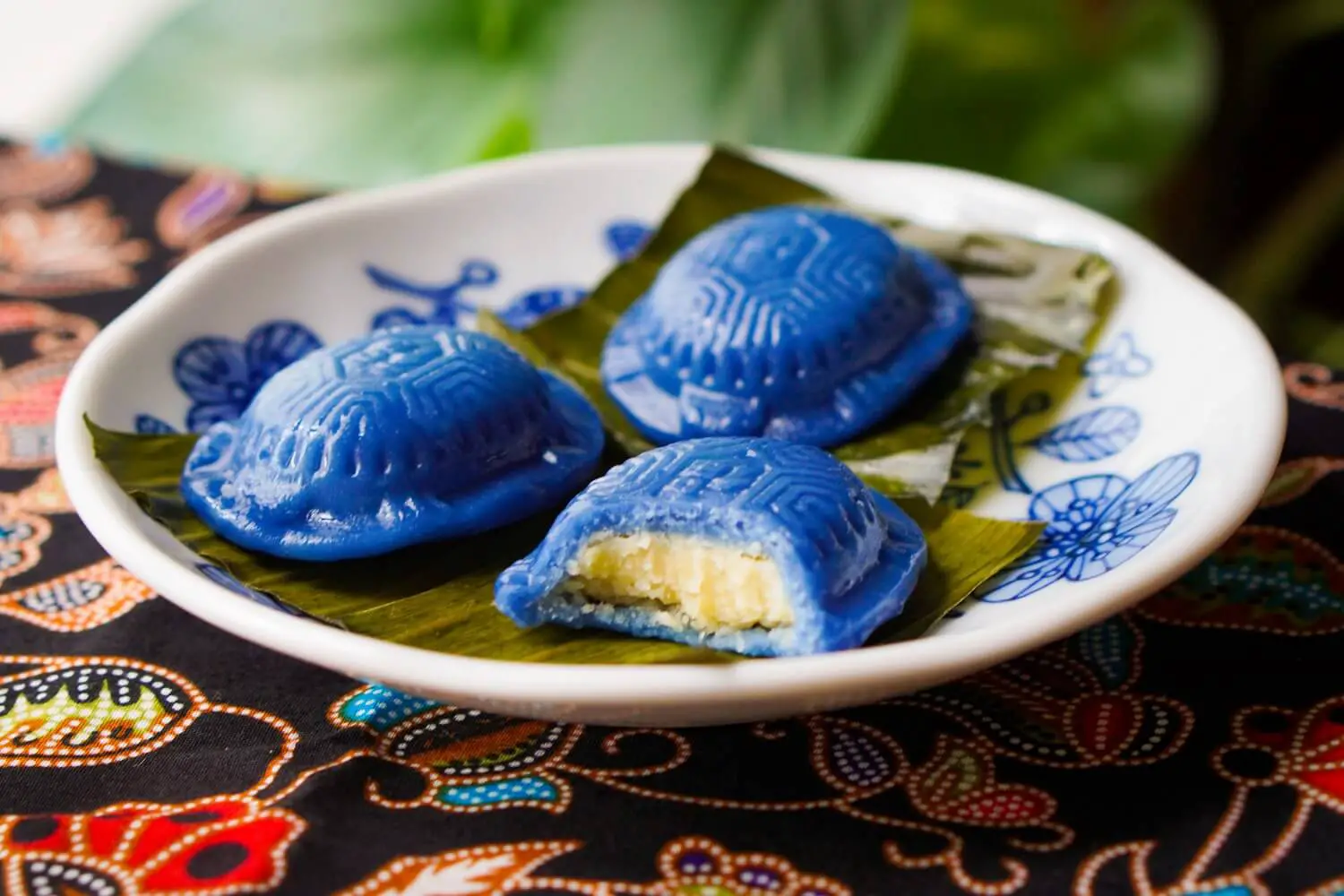
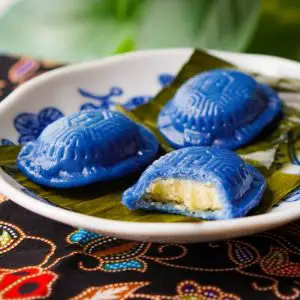
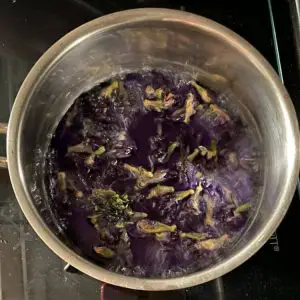



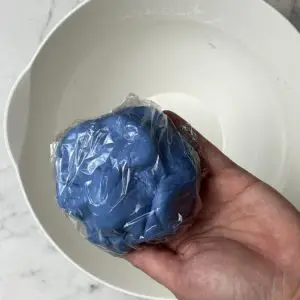
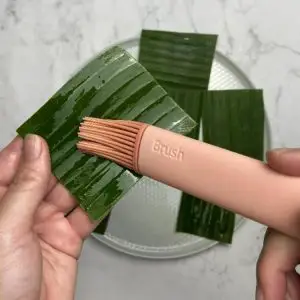
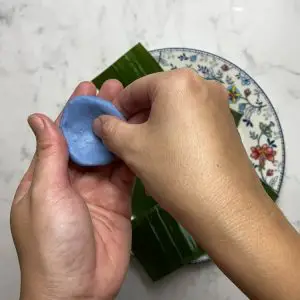
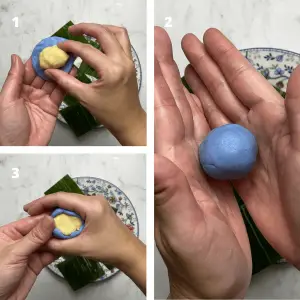

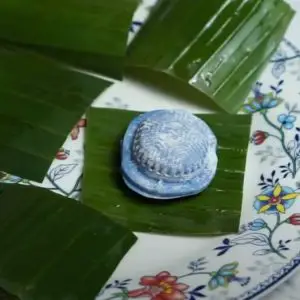
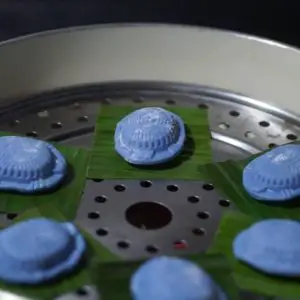
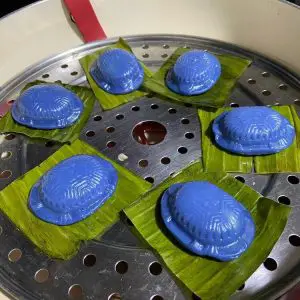
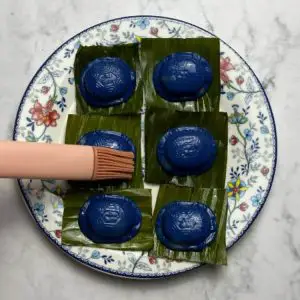
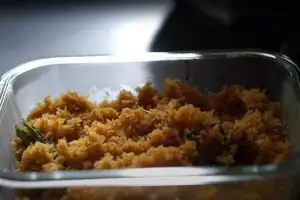 Pandan Coconut Filling for Nonya Kueh and Breads 香兰炒椰丝
Pandan Coconut Filling for Nonya Kueh and Breads 香兰炒椰丝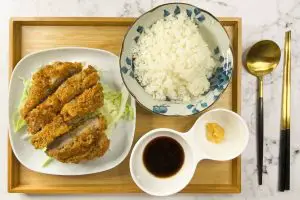 Air Fryer Tonkatsu (Japanese Pork Cutlet)
Air Fryer Tonkatsu (Japanese Pork Cutlet)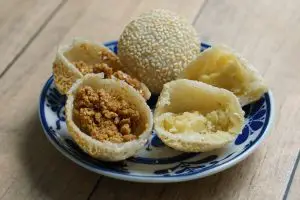
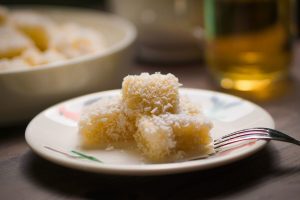



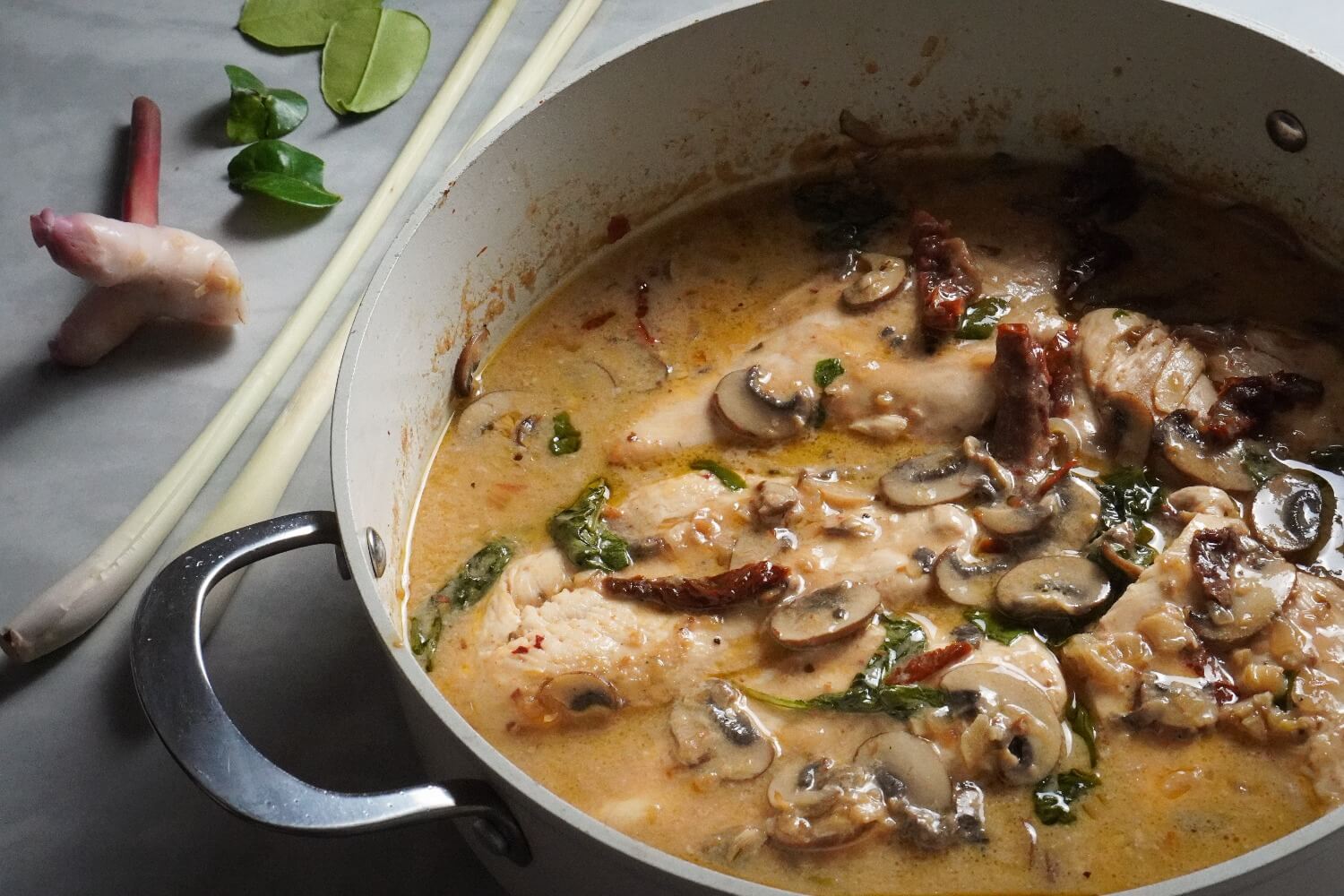
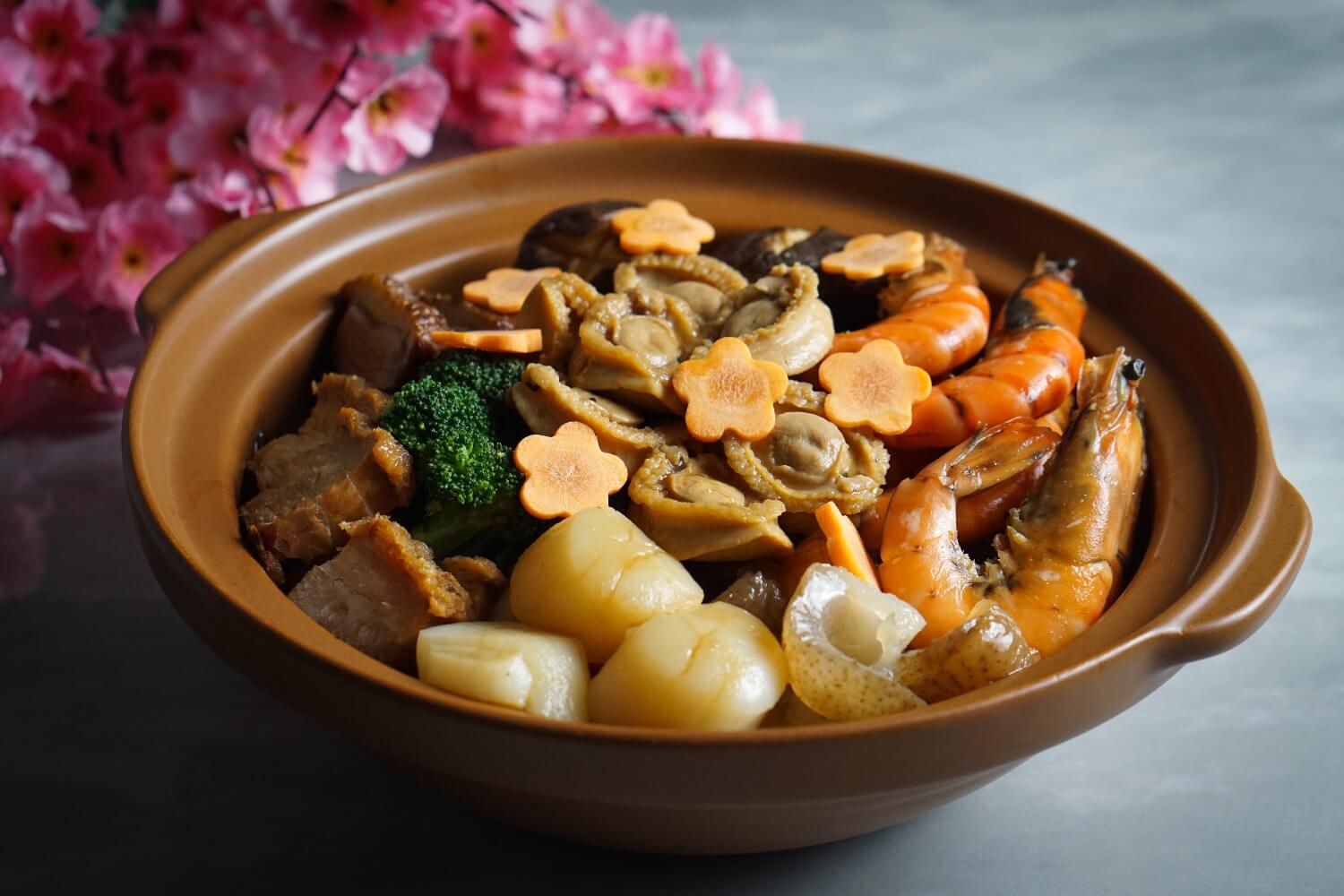
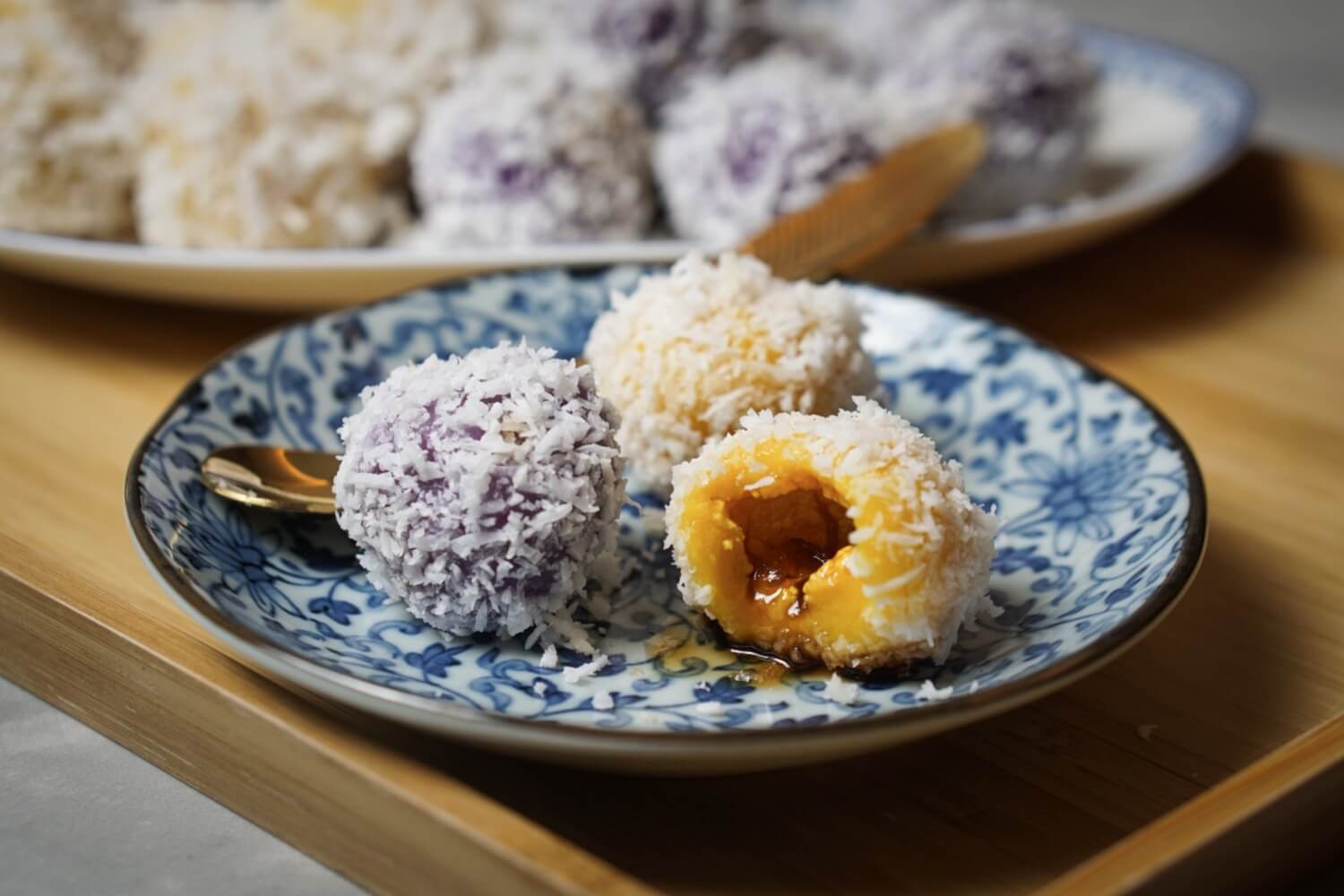



31 July 2022 at 5:57 pmSo beautiful!
5 August 2022 at 1:38 amThanks Irene!
5 August 2022 at 12:38 amThat color is so vibrant! I love the idea of using natural coloring. I’ve actually grown the blue pea flowers in the past but didn’t exactly get as many flowers as I’d like. I will have to try again. Thanks for the inspiration, Pauline!
5 August 2022 at 1:37 amIt’s so nice to have a garden where you can grow your own herbs and crops for cooking. I’m envious. Thanks for visiting Angie!